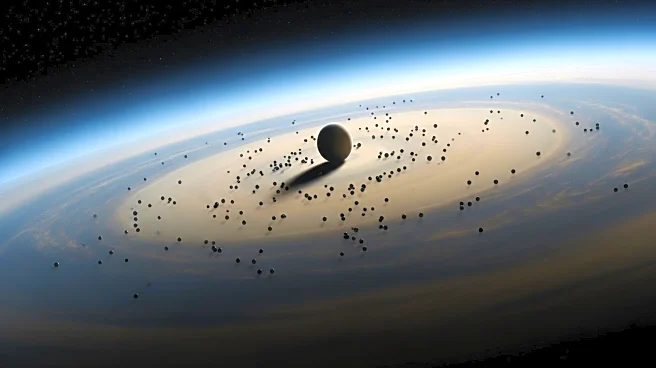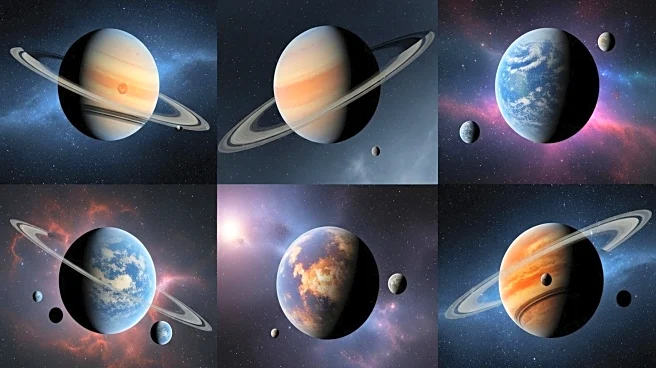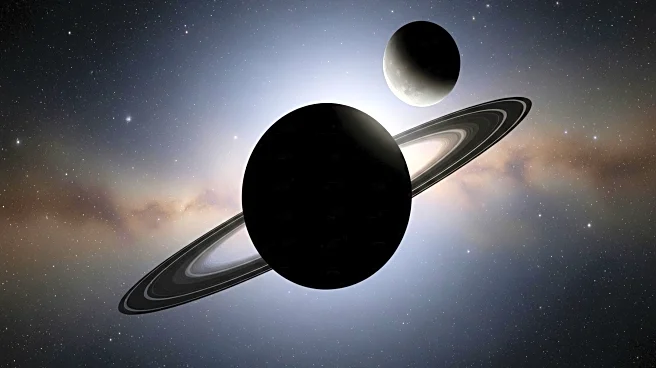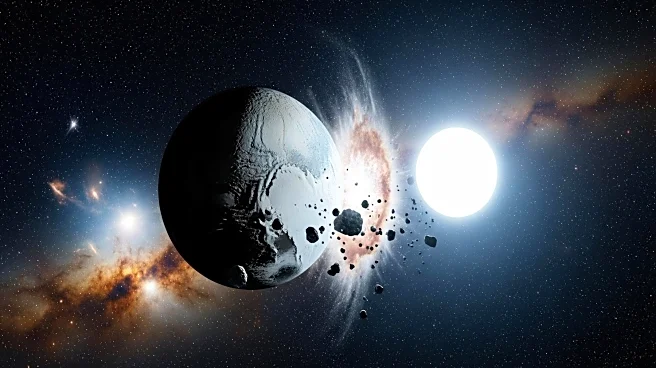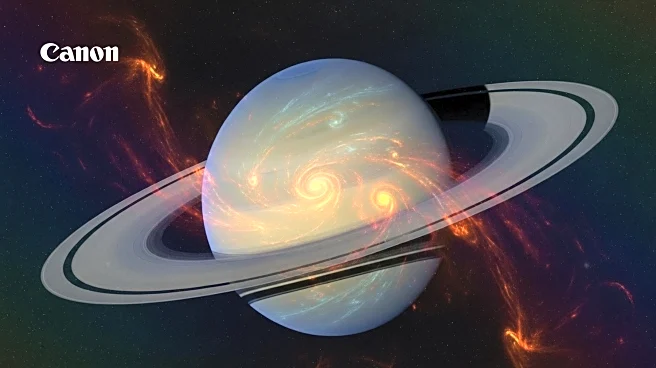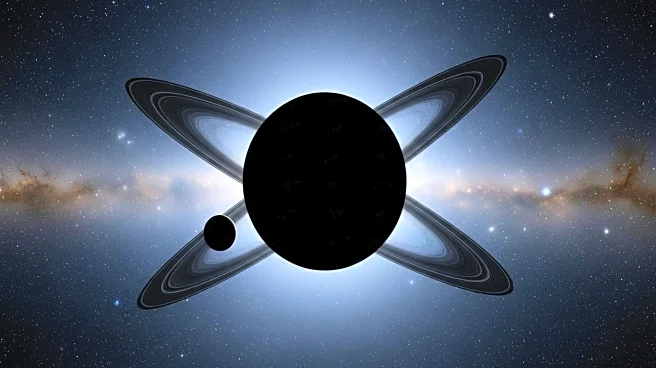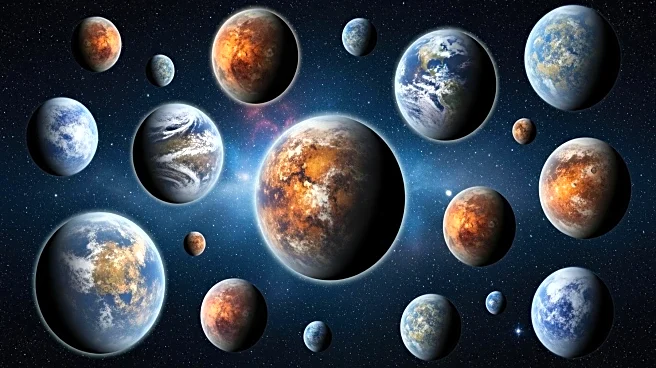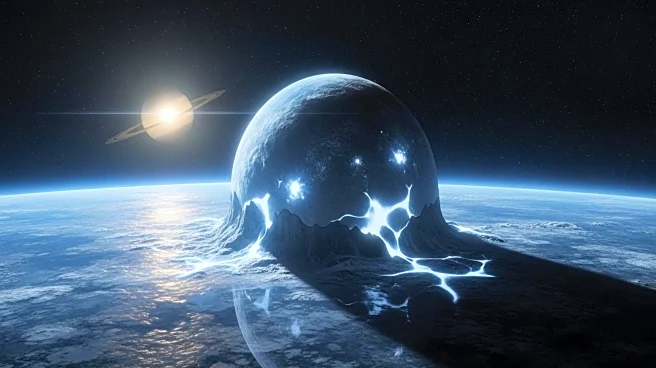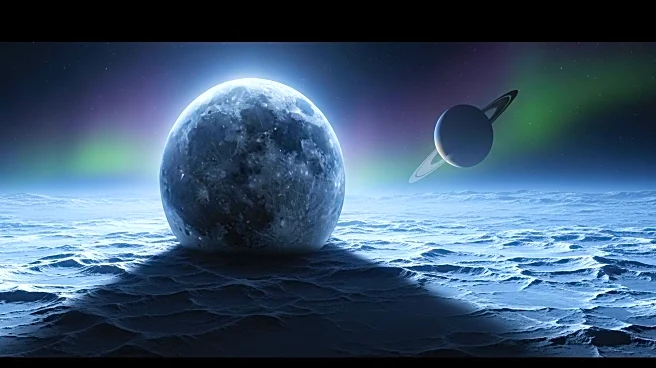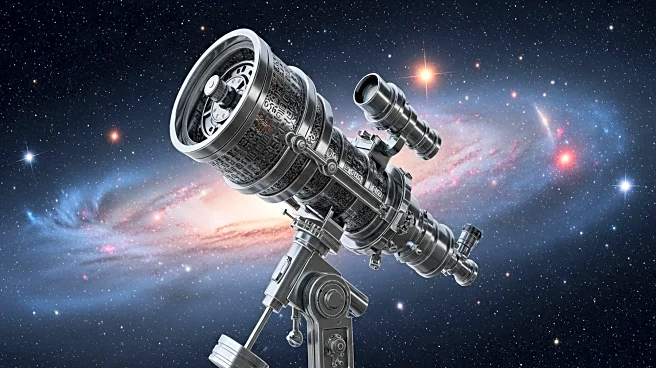What is the story about?
What's Happening?
The James Webb Space Telescope has identified unusual 'dark beads' in Saturn's atmosphere, a discovery that has left scientists puzzled. These features were detected using the telescope's Near Infrared Spectrograph (NIRSpec) as it examined the gas giant's ionosphere and stratosphere. The beads appear to be drifting in the charged plasma of Saturn's ionosphere, and are possibly linked to a lopsided star-shaped structure in the stratosphere. The findings, published in Geophysical Research Letters, suggest complex interactions between Saturn's magnetosphere and its rotating atmosphere, potentially offering new insights into the energy exchange driving Saturn's auroras.
Why It's Important?
This discovery is significant as it could enhance understanding of Saturn's atmospheric dynamics and magnetosphere interactions. The findings may provide insights into the mechanisms behind Saturn's auroras and the hexagonal storm pattern at its north pole. Understanding these phenomena could contribute to broader knowledge of planetary atmospheres and magnetic fields, potentially influencing future space exploration and research methodologies.
What's Next?
Further investigation is required to determine the nature and implications of these 'dark beads'. Scientists may conduct additional observations using the James Webb Space Telescope and other instruments to explore the potential connections between the beads and the hexagonal storm pattern. These studies could lead to new theories about Saturn's atmospheric behavior and its magnetic field interactions.
AI Generated Content
Do you find this article useful?
